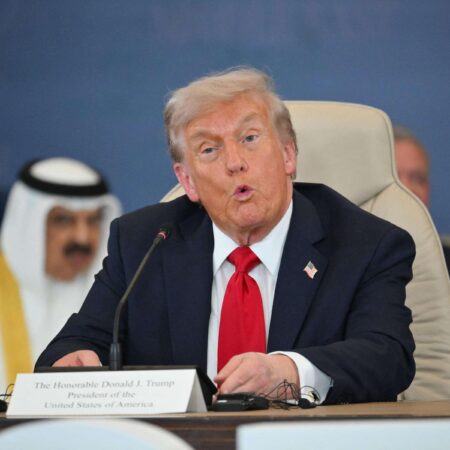Russia is facing a demographic emergency of alarming proportions, with the country projected to experience a labor shortage of 11 million workers by 2030, according to a government minister speaking directly to President Vladimir Putin. The stark warning highlights the severity of Russia’s population decline, which is driven by falling birth rates, high mortality, and emigration. As the workforce shrinks, the government confronts urgent challenges to sustain economic growth and social stability in the coming decade.
Russia Faces Severe Labor Deficit Threatening Economic Stability
The Russian economy is confronting a profound challenge as demographic trends point toward a looming labor shortfall that could reach 11 million workers by 2030. Officials warn that this deficit threatens to undermine productivity across key sectors, disrupt supply chains, and stall economic growth. With a steadily shrinking workforce driven by declining birth rates and increased mortality, the government faces mounting pressure to rethink labor policies and immigration strategies to mitigate the impending crisis.
Experts highlight several critical impacts associated with the workforce gap:
- Reduced industrial output: manufacturing and resource extraction industries may struggle to maintain current levels.
- Rising labor costs: scarcity of skilled workers could push wages higher, affecting competitiveness.
- Increased reliance on automation: accelerating adoption of robotics and AI to compensate for human shortages.
- Potential social strain: demographic imbalance contributing to pension system stress and broader fiscal challenges.
| Sector | Projected Labor Deficit (millions) | Impact Level |
|---|---|---|
| Manufacturing | 4.5 | High |
| Agriculture | 2.3 | Medium |
| Healthcare | 1.8 | High |
| Construction | 1.2 | Medium |
| Services | 1.2 | Low |
Government Strategies to Mitigate Workforce Decline and Boost Population Growth
In response to the looming labor shortage, Russian authorities have rolled out a comprehensive package of policies aimed at reversing demographic decline and fostering sustainable population growth. Key initiatives include expanding maternity capital programs, which provide financial incentives to families having more than one child, and improving access to affordable childcare. Additionally, the government is launching nationwide campaigns to promote healthier lifestyles and extend working life through pension reforms, seeking to retain older workers in the labor force longer. Such measures reflect an urgent pivot toward bolstering the domestic workforce without solely relying on immigration.
Complementing these demographic policies, Russia is actively enhancing its immigration framework to attract skilled foreign workers in critical sectors such as healthcare, IT, and engineering. Streamlined visa processes and special economic zones with tax incentives have been introduced to create a more inviting environment for international talent. The table below summarizes some of the government’s strategic focus areas:
| Strategy | Target Group | Key Benefit |
|---|---|---|
| Maternity Capital | Families with 2+ children | Financial support & housing aid |
| Retirement Age Reform | Older workers | Extended employment opportunities |
| Immigration Incentives | Skilled migrants | Visa simplification & tax relief |
| Healthcare Improvements | General population | Reduced mortality rates |
Expert Recommendations Emphasize Immigration Reform and Workforce Automation
Leading economists and policy analysts are urging the Kremlin to prioritize sweeping changes to immigration policy as a critical element in addressing the forecasted labor shortage. They argue that without a sustainable influx of skilled foreign workers, Russia’s industrial output and economic vitality could face severe constraints. Among the proposed measures are streamlined visa processes, incentives for high-demand professions, and bilateral agreements to attract talent from neighboring countries. These recommendations reflect a growing consensus that demographic challenges require not only reactive but proactive governmental strategies.
Simultaneously, experts highlight the accelerating role of workforce automation as a necessary counterbalance to the shrinking labor force. Investment in robotics, artificial intelligence, and digital infrastructure is expected to mitigate the impact of human labor deficits in key sectors like manufacturing, agriculture, and logistics. The table below outlines the projected contributions of automation across various industries by 2030:
| Industry | Automation Growth (%) | Labor Reduction Impact |
|---|---|---|
| Manufacturing | 45% | Moderate-High |
| Agriculture | 38% | High |
| Logistics | 50% | High |
| Healthcare | 20% | Low-Moderate |
Policy specialists emphasize that a dual approach-embracing both immigration reform and automation advancements-will be essential for Russia to safeguard its workforce capacity amidst a demographic crisis. Without such initiatives, maintaining economic growth and national productivity may prove increasingly elusive as the labor gap widens.
Closing Remarks
As Russia grapples with a rapidly shrinking workforce and a demographic decline unprecedented in its recent history, the looming labor shortage of 11 million by 2030 poses significant challenges for the country’s economic stability and growth prospects. Policymakers face increasing pressure to implement effective strategies to mitigate this crisis, from boosting birth rates and improving healthcare to considering immigration reforms. How Russia addresses these demographic hurdles in the coming years will be critical not only for its domestic economy but also for its geopolitical influence on the global stage.




